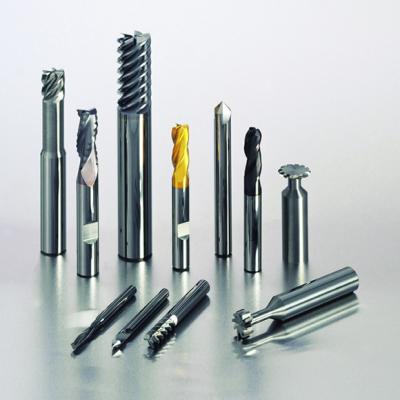
GenSwiss, Westfield, Mass., recently partnered with Louis Belet SA to become the exclusive North American representative for Louis Belet precision carbide cutting tools and PCD-tipped milling tools, according to a Feb. 17 news release from Genevieve Swiss Industries Inc.
A supplier to many legendary Swiss watch manufacturers, Louis Belet offers highly focused niche products for aerospace, medical, automotive and a wide range of micromanufacturing applications, GenSwiss reported. Precision carbide tools include micro drills and coolant-thru drills offered in application specific geometries and select coatings that are said to deliver clean, high-precision results with more holes and extended tool life for reduced manufacturing costs.
For example, the Expert 370 series drills for stainless incorporate newly engineered cutting and coating parameters that result in greater productivity levels, less burrs and overall higher quality holes, according to the company. For brass applications, the new Expert 1820 series micro end mills are optimized to deliver higher metal removal rates and superior surface quality.
The Louis Belet product offering also includes carbide end mills available as micro, square and ball nose, as well as engraving mills, saw blades with variable tool geometry and full radius forms, and a broad selection of PCD end mills and PCD drills for a wide range of precision machining applications.
Contact Details
Related Glossary Terms
- gang cutting ( milling)
gang cutting ( milling)
Machining with several cutters mounted on a single arbor, generally for simultaneous cutting.
- milling
milling
Machining operation in which metal or other material is removed by applying power to a rotating cutter. In vertical milling, the cutting tool is mounted vertically on the spindle. In horizontal milling, the cutting tool is mounted horizontally, either directly on the spindle or on an arbor. Horizontal milling is further broken down into conventional milling, where the cutter rotates opposite the direction of feed, or “up” into the workpiece; and climb milling, where the cutter rotates in the direction of feed, or “down” into the workpiece. Milling operations include plane or surface milling, endmilling, facemilling, angle milling, form milling and profiling.
- polycrystalline diamond ( PCD)
polycrystalline diamond ( PCD)
Cutting tool material consisting of natural or synthetic diamond crystals bonded together under high pressure at elevated temperatures. PCD is available as a tip brazed to a carbide insert carrier. Used for machining nonferrous alloys and nonmetallic materials at high cutting speeds.
- precision machining ( precision measurement)
precision machining ( precision measurement)
Machining and measuring to exacting standards. Four basic considerations are: dimensions, or geometrical characteristics such as lengths, angles and diameters of which the sizes are numerically specified; limits, or the maximum and minimum sizes permissible for a specified dimension; tolerances, or the total permissible variations in size; and allowances, or the prescribed differences in dimensions between mating parts.
- sawing machine ( saw)
sawing machine ( saw)
Machine designed to use a serrated-tooth blade to cut metal or other material. Comes in a wide variety of styles but takes one of four basic forms: hacksaw (a simple, rugged machine that uses a reciprocating motion to part metal or other material); cold or circular saw (powers a circular blade that cuts structural materials); bandsaw (runs an endless band; the two basic types are cutoff and contour band machines, which cut intricate contours and shapes); and abrasive cutoff saw (similar in appearance to the cold saw, but uses an abrasive disc that rotates at high speeds rather than a blade with serrated teeth).
